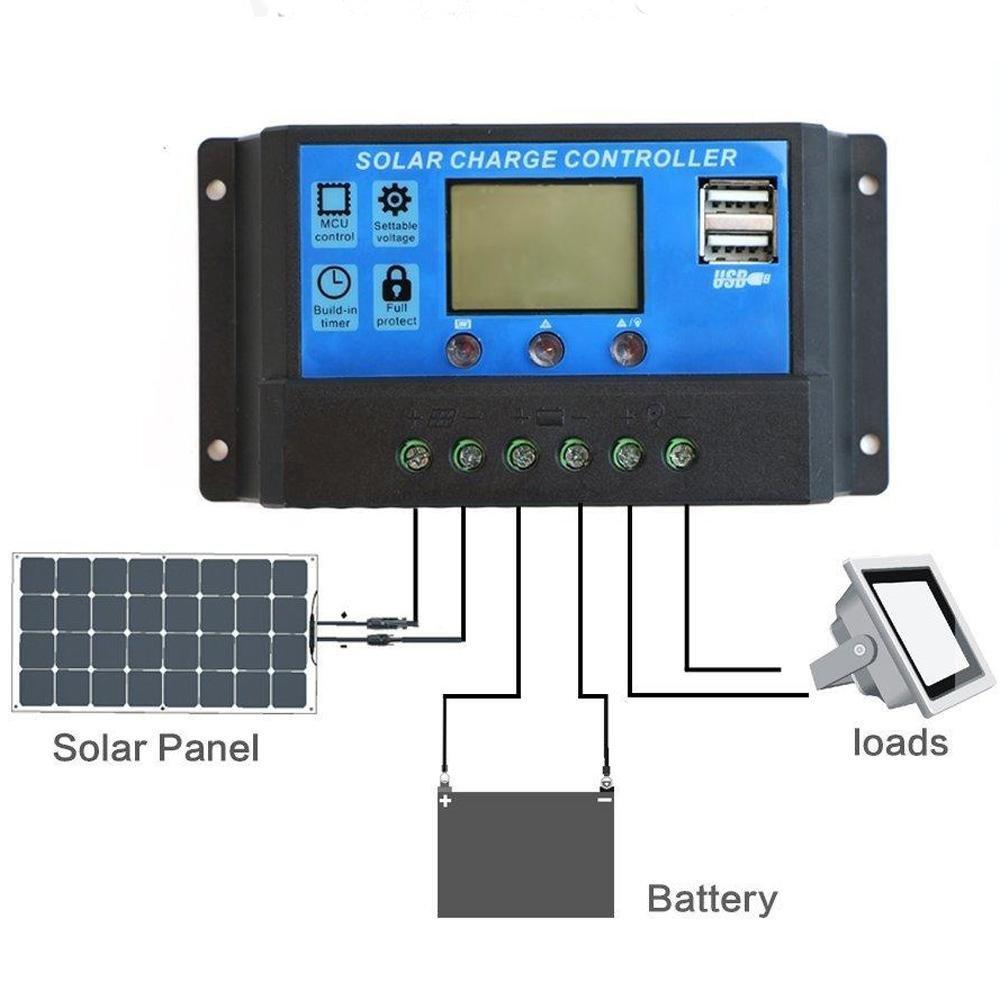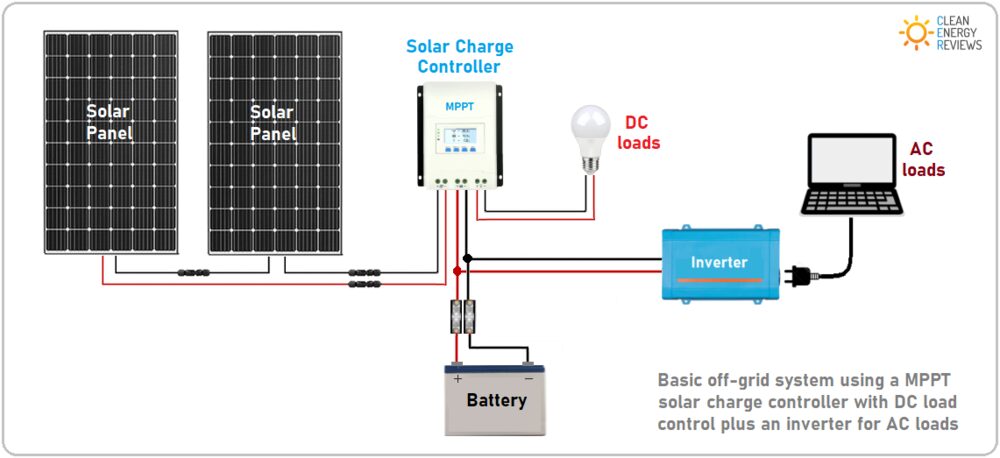Alternative sources of energy really need more attention from people, much more than they are currently enjoying. If we are to save our planet and stop pollution in general while preserving the last amounts of fossil fuels, we have to turn to such energy sources like the sun. Solar power can be used in so many different areas of life, most of which have to somehow deal with heating.
The technology is ripe for wide adoption, as it is no longer as expensive nor complicated as it once was. The panels have so many benefits and the whole system as a whole is rather straightforward to install. However, they are not the only major part to think about. An equally important thing to consider is the right solar controller.
What is It?
A charge solar controller is a critical component of the solar panel system that keeps batteries from overcharging by regulating the voltage and the current coming from the solar panels and going to the battery. This crucial voltage and current regulating feature makes solar controllers a vital part of any solar power system since without them they would be using too much or too little and therefore break. To measure current you can use current clamps, Learn more about current clamps here.
If you are wondering whether or not you need one, the answer would be yes. However, even if you have to install a solar controller for your solar power system, and want to, chances are you have no idea how to do it alone. Nor are you able to choose the right fit for your system and your circumstances on your own. Choosing the right solar controller is important to protect your battery storage components and therefore the overall solar panel installation because they ensure that everything runs efficiently and safely, giving the batteries a longer life. If you wish to learn more about them as well as browse some of the best ones on the market, you can find a great range at RS Components.
While looking through the catalogues of different controllers, these are the functions to pay close attention to:
Protection from overload: If the current passing through the batteries is much higher than the normal flow, the system may overload causing overheating and great damage. This situation can be prevented by solar controllers so make sure it has this feature.
Disconnects when the voltage is low: When the voltage is low, a charge controller disconnects from the power source. It automatically reconnects to the battery when the voltage gets to normal. This problem is on the other end of the spectrum from the previous one and therefore equally important.
Block reverse currents: Charge controllers prevent current from passing in the reverse direction, which of course can never be good for the batteries.
Now that you know the most important features to have, you can shop more precisely. Still, before choosing the right solar controller, we need to understand the main types of charge controllers available on the contemporary market.
Types of solar controllers

Solar controllers come in various shapes, sizes, price ranges, features and power ratings. Considering the difference this brings about, they are usually grouped into three general types:
- Simple 1 or 2 stage controls
- Pulse width modulation (PWM)
- Maximum power point tracking (MPPT)
Simple 1 or 2 stage controls: This is a relatively older system which uses relays or shunts transistors to control the voltage in just a few steps. The simple step stage controls disconnect the solar panel when a certain voltage is reached and that is about everything there is to it.
Pulse width modulation (PWM) charge controllers: PWM charge controllers regulate the voltage or the current to the battery by using a process known as pulse width modulation. In these systems, the current is reduced gradually with a series of short charging pulses to the battery. If you own a small scale system where the efficiency of the system is only secondary, PWM is the best solar controller to choose.
As the PWM solar controllers only send small amounts of power to keep batteries full, it is the right solar controller if your system uses only less energy as well. This all means that they are great for single home solar panel systems that do not require heavy duty operation. The PWM is a good option for solar systems with panels with a maximum power voltage of up to 18V for charging a 12V battery.
Maximum power point tracking (MPPT) controllers: Lastly, we have the most advanced and equipped controllers. MPPT is the right solar controller if you want to install a larger system with highly efficient energy consumption and usage. This is because MPPT systems can draw full power from a solar panel to charge the batteries. What is more, with MPPT solar controllers, although the power drawn from the panel is at maximum, the controllers limit their output to safeguard the batteries and they do not get overcharged. What this means is that they offer the best protection from the usual problems with solar panels and solar batteries. The MPPT is the right choice when the solar array voltage is substantially higher than the battery voltage, as well as if you have a lot to think about with your impressive, large scale solar panel operation.
Conclusion and Takeaways

As you now know from the aforementioned examples, there are quite a few things to consider and think about when the right solar controller is in question. Trust us, the last thing you want is for your entire system to suffer for years before it completely breaks and needs expensive maintenance, new parts, or worst of all, if it dies completely. These are still relatively new additions to the market although they have been present for decades now. People still do not know enough about them and not everyone can afford them, which is why every single customer should be familiar with how to protect the batteries and control what goes to and from them. Make sure never to try and save some money on the important parts by buying the budget option, since the controller can be the difference maker in a sticky situation.





